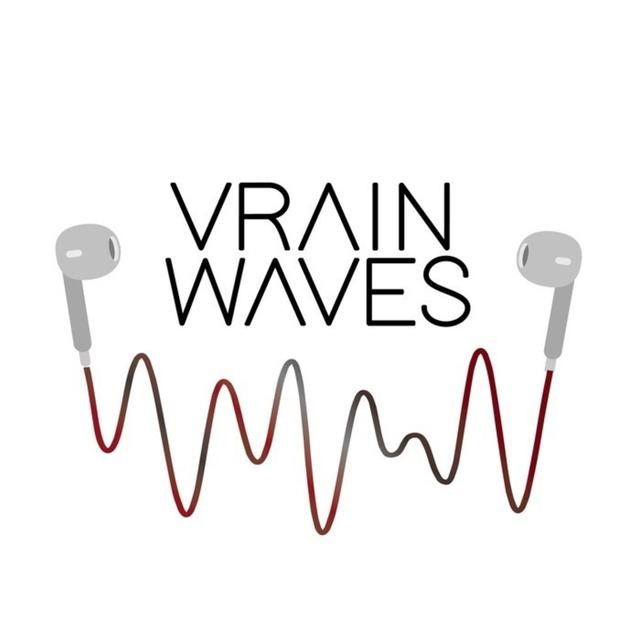
Formative Assessment Strategies and Moves with Dr. Duckor & Dr. Holmberg
Episode description
Episode 014: Dr. Brent Duckor & Dr. Carrie Holmberg, Mastering Formative Assessment Moves
In the foreword for this book, Dr. John Hattie describes the work of Dr. Duckor and Dr. Holmberg as “[bringing to life] how to think of one’s self on a trajectory of powerful practices that unite instruction and assessment.” In many conversations, we tend to separate the two and don’t think deeply enough about the intersection of instruction and assessment. A highly recommended read from the 2 authors with publisher ASCD. Our conversation with them should give you a good idea of what their perspective before or after you read.
Connect with Vrain Waves
Twitter: @VrainWaves | Becky Twitter: @BeckyEPeters | Ben Twitter: @mrkalb
Connect with Dr. Duckor & Dr. Holmberg
Twitter: @BrentDuckor, @CarrieHolmberg | Website: http://validitypartners.com/ | Book: Mastering Formative Assessment Moves (Amazon | ASCD)
Links & Show Notes
- Skip to Minute 7:55 to get to the Interview with Drs. Duckor & Holmberg
- Out of Our Heads and Into the Classroom (03:51)
- Two Truths & A Lie (04:07)
- Create a meme (4:44)
- Analogies (05:26)
- Introductions to guests (06:47)
- 7 moves: Priming, Posing, Pausing, Probing, Bouncing, Tagging, Binning
- Priming: Preparing the groundwork; establishing & maintaining norms; acting to acculturate students to learning publicly
- Posing: Asking questions that size up the learner’s needs in the lesson and across the unit
- Pausing: Giving students adequate time to think and respond as individuals or in groups
- Probing: Asking follow up questions that use information from actual student responses
- Bouncing: Sampling a variety of responses intentionally & systematically to better map the terrain of student thinking
- Tagging: Publicly representing variation in student thinking by creating a snapshot or a running record of class responses
- Role of Formative Assessment (08:52)
- National Research Council, 1999 book: How People Learn: Mind, Brain, Experience, and School (free pdf download)
- “Kids are better served when we build the bridges from where their own understanding is to the content than when we ignore it and pretend that they’re a blank slate.”
- Why do Formative Assessment (10:57)
- Identifies the gap between what we think we’re teaching and what the students are understanding
- Teacher decision making and the formative assessment moves (13:32)
- Sound principles in educational assessment (14:23) - 2001 National Research Council: Knowing What Students Know: The Science and Design of Educational Assessment
- Observation and interpretation
- Priming & visibility of thinking (15:36)
- (From the Book: “...priming can help make not only learning visible, priming can go a long way toward making students visible”)
- Practical uses of priming (16:43)
- “We all have the right to be wrong.” “We all can risk an explanation.” “Our voices should be heard.”
- Habits of Heart / Habits of Mind (18:15)
- Dr. Holmberg on being a better listener, having language for the moves to get better at them (19:27)
- Pausing (20:50)
- Essential to processing time
- Mary Budd Rowe on Wait Time; another
- Kenneth Tobin
- Pauses of 3 to 5 seconds are where the magic happens
- Inside the Black Box, Black & Wiliam (impact of FA on student achievement)
- Balance between efficiency and authenticity with follow up questioning
- Tagging (26:38)
- Visual representations of student responses
- High tech or low tech
- Releasing control & embracing anxiety (29:49)
- “Teachers, like artists, are often dealing with the complexity of the moment.”
- Tagging around the room or virtually, what do we do with tagging after the process (32:57)
- Bouncing as a precursor to tagging (34:05)
- Assessment triangle - p 44 (Cognition, Observation, Interpretation), how students develop competence (34:18) from Knowing What Students Know, NAP
- Synchronizing the 7 moves & using common language (36:08)
- Targeted bouncing on student writing (37:24)
- Binning to make instructional decisions (38:20)
- How do we get better at the 7 moves? (39:40)
- STEM & misconceptions (41:10)
- Predict → Observe → Explain routine from Stanford (41:30) - use for your teaching
- Dr. John Hattie
- Dr. Lorrie Shepard, University of Colorado
- Jim Popham
- Robert Linquanti, WestEd
- Assessment-Capable Learners; student role in formative assessment (43:52)
- Transparency with students with FA (45:35)
- To learn more from Brent & Carrie: validitypartners.com (free resources & email links)
- Takeaways with Ben & Becky (47:55)
- Tweet us @VrainWaves with your Formative Assessment Moves!!
